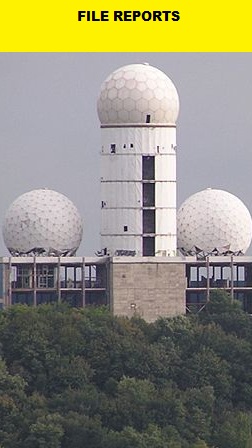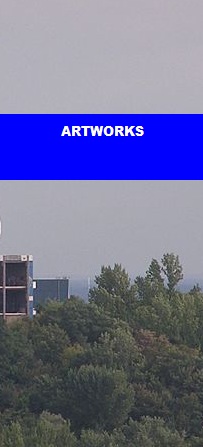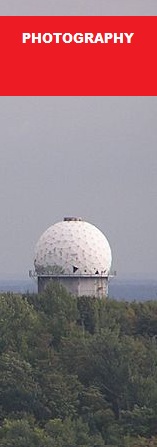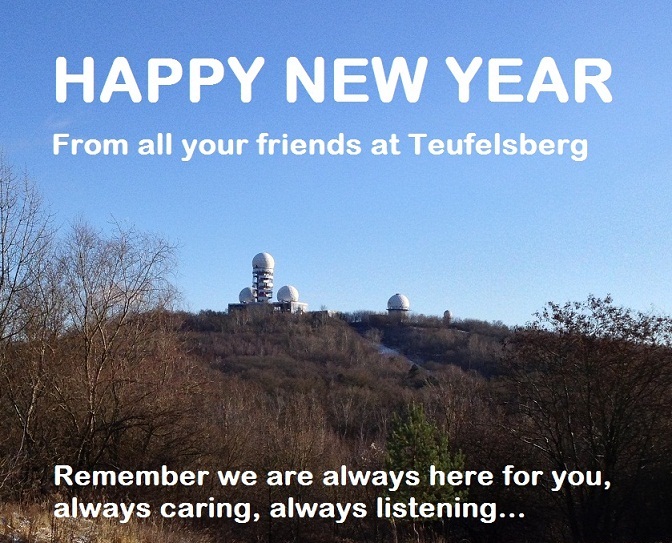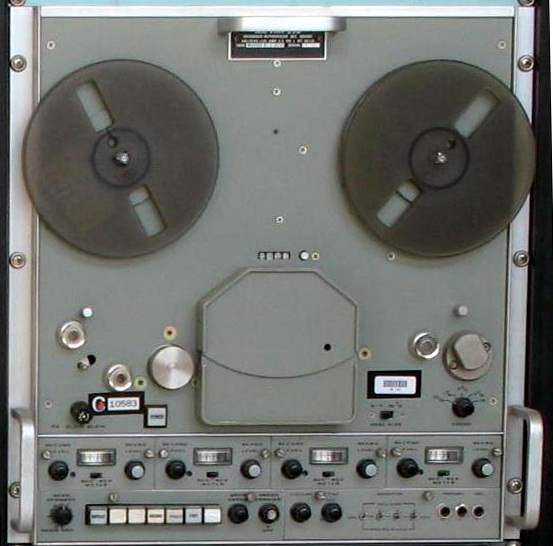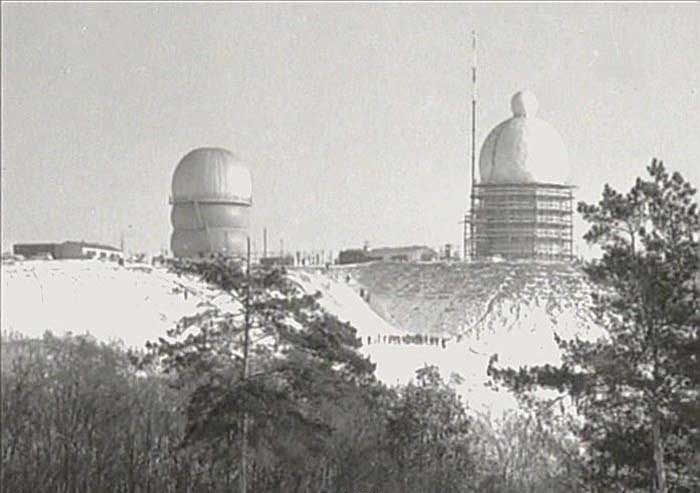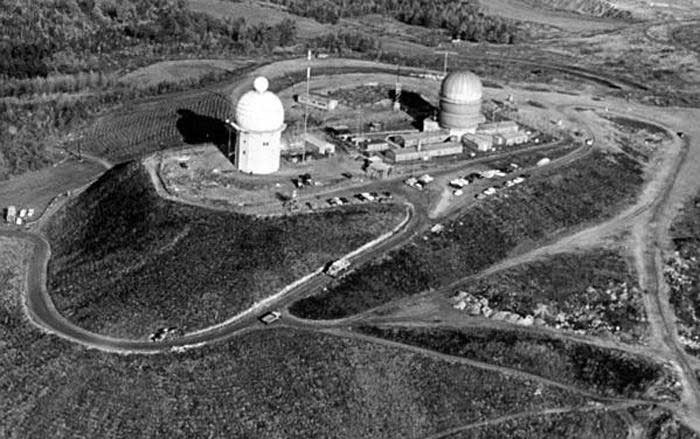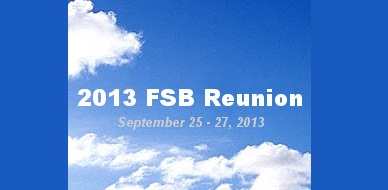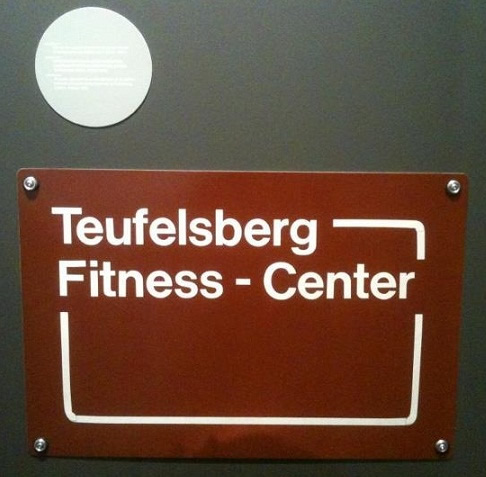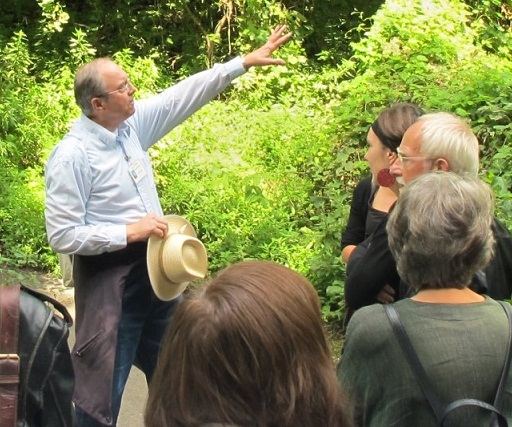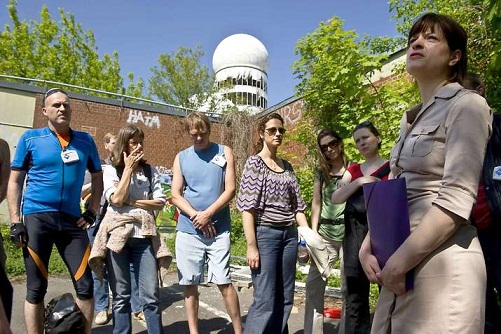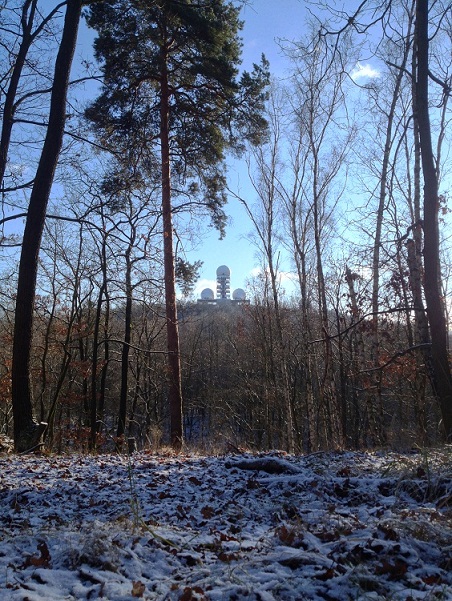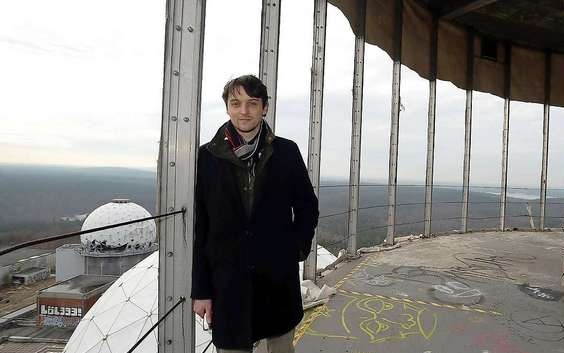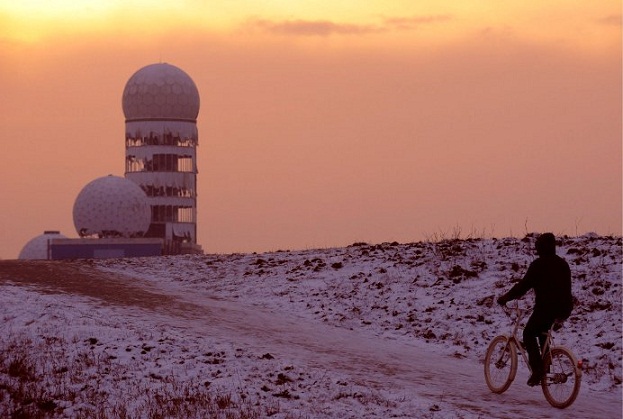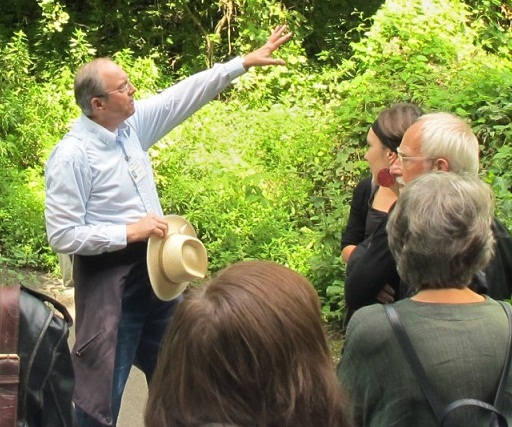|
|
|
TEUFELSBERG FIELD STATION BERLIN
The Cold War Spy Station
If you have a secret to share please email:
|
Tuesday January 1, 2013
|
"The cloak of secrecy that covered it from the onset remains" December 2012 statement from Field Station Berlin Veteran (1967-1970)
|
COLLECT T.H.E. HILL WILL RELEASE A SPECIAL BERLIN SKYLINE MONUMENTS SERIES OF CINDERELLA STAMPS IN 2013 Code-named T.H.E. Hill, these artworks are created by a Field Station Berlin Veteran who worked at Teufelsberg during the mid-1970s. For further information on the new series of cinderella stamps visit the 'Voices Under Berlin', please CLICK HERE
FIELD STATION BERLIN: LIGHTNING FAST CHICKEN PLUCKER (2010) T.H.E. Hill, refrigerator magnet, 8.5 x 5 cms.
SIGINT IN BERLIN (2010) T.H.E. Hill, refrigerator magnet, 8.5 x 5 cms.
Detail of Teufelsberg stamp from AMERICANS IN BERLIN (2009) T.H.E. Hill, cinderella stamps, 20 x 15 cms.
4-POWER CITY (2008) T.H.E. Hill, refrigerator magnet, 14 x 10.5 cms.
TEUFELSBERG CREST (2008) T.H.E. Hill, refrigerator magnet, 8.5 x 5 cms.
54th SOU DUI (1966), graphic recreation (2010) of the cloisonné pin, 3.75 x 2.5 cms.
I STILL HAVE A SUITCASE IN BERLIN (2012) T.H.E. Hill, frame from a web animation, 11 x 9 cms. CLICK HERE
|
HEADLINES
Artist Brendan Jamison celebrating 50 years of Field Station Berlin
AN/TNH-21
ART PROJECT: THE ARCHITECTURE OF ESPIONAGE During January to February 2013, artist Brendan Jamison will be working on Phase 3 of Teufelsberg Field Station Berlin, a year long project based on the secret listening station built during the Cold War era. The field station is located at the peak of Teufelsberg in the Grunewald Forest. It was built by the American National Security Agency and shared with British Intelligence. With temporary mobile units in place since 1960, it was not until 1963 when permanent structures began to appear on the hill top. However, the 'architecture of espionage' was forever evolving. The field station expanded rapidly between 1963-1977. In the beginning there were no radomes, by 1977, there were 5. For more information on Teufelsberg Spy Station please CLICK HERE _________________________________________ FROM THE ARCHIVES THE 1960s
Archive image of FSB from early 1960s
Archive image of FSB from early 1960s
Archive image of FSB from mid 1960s
Archive image of FSB from mid 1960s
|
FSB VETERANS REUNION 2013 The Field Station Berlin Veterans Group will meet for a special 3 day reunion from Wednesday September 25th to Friday September 27th, 2013. They hope to include the unveiling of a special plaque to commemorate the important secret work undertaken at Teufelsberg during the Cold War. To find out more please CLICK HERE. ______________________ NEW YEAR, NEW EXERCISE PROGRAM!
KEEP ACTIVE, KEEP FIT! It is the first day of 2013 so make sure a new exercise program is high on the agenda for your new year resolutions! __________________________ OFFICIAL TOURS OF FSB
FSB Veteran Christopher McLarren is one of 5 tour guides at Teufeslberg Duration: 2- 3 hours Entrance fee: € 15 Berlin Sight Out offer ‘English’ tours on the following dates: For further information please CLICK HERE
_____________________ WINTER SNOW AT FSB
Approaching FSB from North West direction on Wednesday 5 December 2012. Photography © Brendan Jamison.
|
TEUFELSBERG MEDIA COVERAGE
FOR ART PROJECTS
|
Excerpt from BBC News on 14 November 2012. Sculptor Brendan Jamison hopes for 'sweet' response
....Brendan Jamison "is currently working on a sculpture of an old US spy station in west Berlin. It was built on an artificial hill at Teufelsberg - Devil's Mountain. "The mound was made out of all the rubble heaped up in Berlin after the war," Brendan said. "It was piled up into a hill. It was the highest point in Berlin and was used from 1963 to the end of the Cold War. Nowadays people go out into Grunewald forest for a walk and to see it." Earlier this year, Brendan Jamison was elected to the Royal British Society of Sculptors....
TEUFELSBERG MEDIA COVERAGE ON THE FUTURE OF THE STATION
The guide Andreas Jüttemann with tight security services and the company who offer public tours on Sundays on top of Teufelsberg. Photo: Mike Wolff
THE DEVIL'S MOUNTAIN: THE RUIN LIVES By Cay Dobberke May 14, 2011
2011: Winter day at Teufelsberg. Photography: © Tagesspeigel ____________________________
16 DECEMBER 2012
Wo die Spione lauschtenUnterwegs auf dem Berliner TeufelsbergInside information: The American Christopher McLarren worked from 1973 to 1975 on the listening station in Grunewald. He now does the guides on the Teufelsberg
The old listening station on the Teufelsberg was restricted for years. From here, the Americans listened in on the Soviet Bloc from the Cold War.
Meanwhile, a former American soldier offers guided tours of the grounds. A trip to the Berlin Grunewald. Berlin - Who has courage looks down. However, you first must meet the gaze straight ahead. Miles of green treetops. And tiny behind the Olympic Stadium. Then again green space, the rear seems to meet the sky on the horizon. It has a beautiful view of the white dome, the highest point of the old listening station on the Berlin Teufelsberg. But the view is risky: one step forward and you fall through the hole in the wall 26 meters in depth.
The white dome light is dim. The room is about the size of the center circle in a football field. Plane white shapes are around the roof. It is stitched in diamonds and resembles a football. At one point, someone has cut a hole into the outer skin of the dome. It's as big as a door. This white dome and her sisters on the old listening station is one of the landmarks of Berlin. If you travel by plane, you see the footballs in Grunewald at the landing. Unlike the Victory Column and the Brandenburg Gate, this landmark is wound around with many secrets. For years, the terrain on the Teufelsberg in the Grunewald was a restricted military zone. From up here in the cold war, the entire Soviet bloc was spied upon. For some time now, there have been tours to the site.
A mountain of rubble
Today, about 30 people have come to the Grunewald train station, where the tours start. The group are comprised of Berliners and also tourists from abroad. They gather around an elderly gentleman with a Panama hat. After 20 minutes of walking through the Grunewald, the group is faced with an iron factory gate. The "Field Station Berlin" is reached. With 115 meters in height, The Teufelsberg in the Grunewald, is significantly higher than the rest of Berlin.
The mountain was created after the Second World War from the rubble of the bombed-out city. The 'Field Station Berlin' on the Teufelsberg was built in the early 60s. During the Cold War the British and the Americans were there to listen to the communications in the east.
"You could listen for some 300 kilometers from here," said Christopher McLarren, the man with the Panama hat. "Therefore the minutes of the listening station had been of great interest. Because of no other place you could hear so far into the land of the enemy."
"It was puzzle work"
Today we can only guess how the listening station once looked. At the facility entrance, each visitor has to sign a paper. It states that the organizer is not liable for accidents. Then the tour goes around a bend - and suddenly you are faced with the ruins: The windows of the buildings are smashed and the walls sprayed with graffiti. "I know the building" says McLarren. "But I do not know it"
After the end of the Cold War was the old listening station initially lay empty. In 1995 it was bought by a group of investors from the Cologne area. They wanted to build condos there. But Berlin protested that they did not want a development area created in the woods. The city escaped the investors. Then nothing happened for a few years.
From the courtyard the tour continues to the highest tower of the listening station. There is garbage and broken glass everywhere. On one floor the graffiti is spectacular. A woman with a dandelion in her hand adorns a wall about ten feet long. At the same time the view is always better. In between, there is always a dark stairwell. Once a close-knit community in the dome, visitors sit exhausted on stones. The man in the Panama hat looks satisfied out of the hole in the facade.
Christopher McLarren is 65 years old and American. From 1973 to 1975 he worked as an evaluator at the listening station. His job was to sift the intercepted protocols - and to decide which of them was to be sent to the headquarters in Washington. "It was puzzle work," he says. But he does not discuss anything about the intercepted information.
Instead, he talks about the lives of the soldiers who worked there. He tells of working days that were not too hard on the good cafeteria food, and from the close-knit community, today they are veterans of Teufelsberg.
Then it's back out of the tower to the ground. The group slowly ventures through the dark staircase down again. A last look at the floors with their graffiti art. Then we are all back on the forecourt, remembering a drinks price list to the parties of yesteryear.
Kristin Kruthaup, dpa ____________________________
|
RETURN TO TEUFELSBERG HOMEPAGE
|
Design © Brendan Jamison 2008-2013 |

